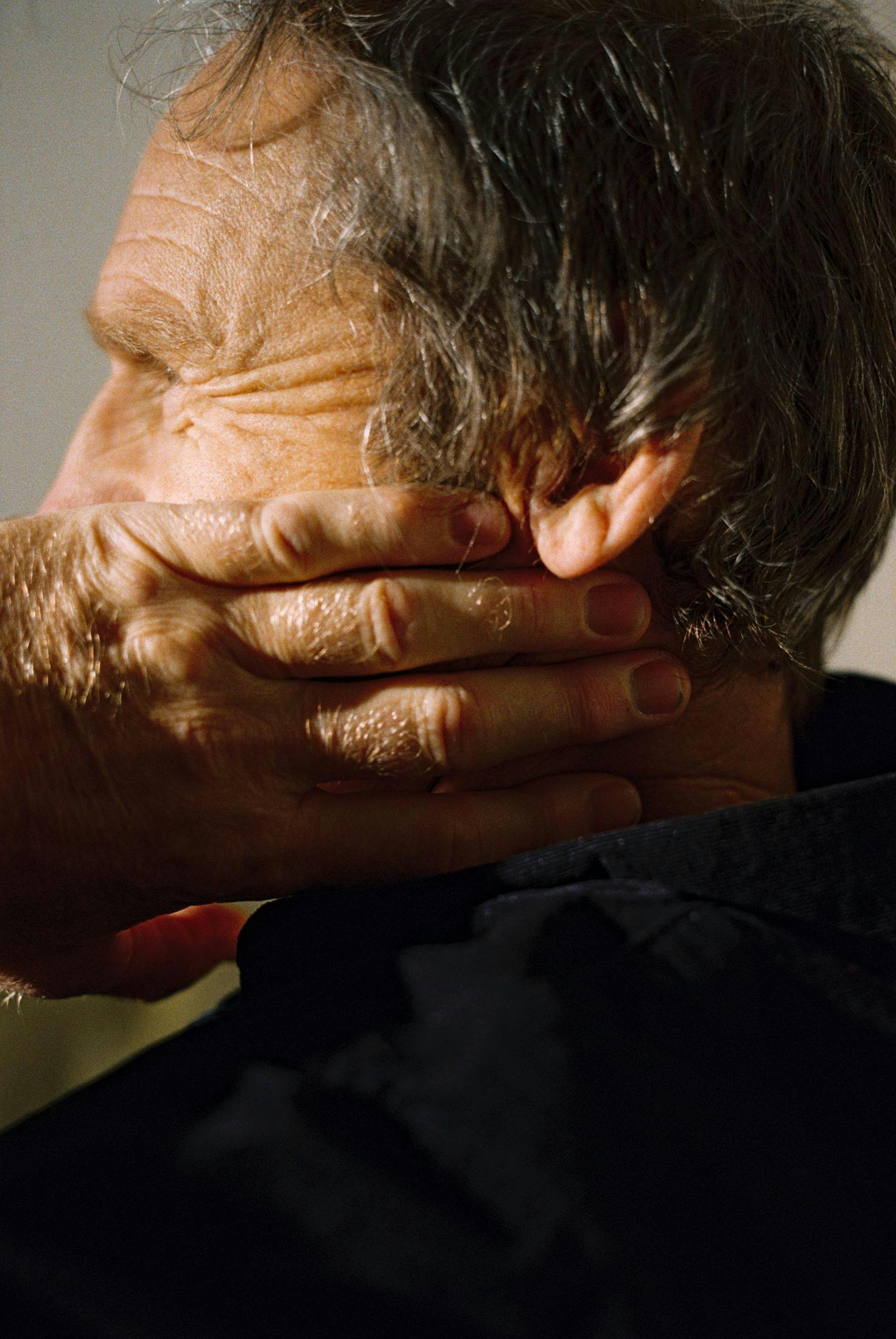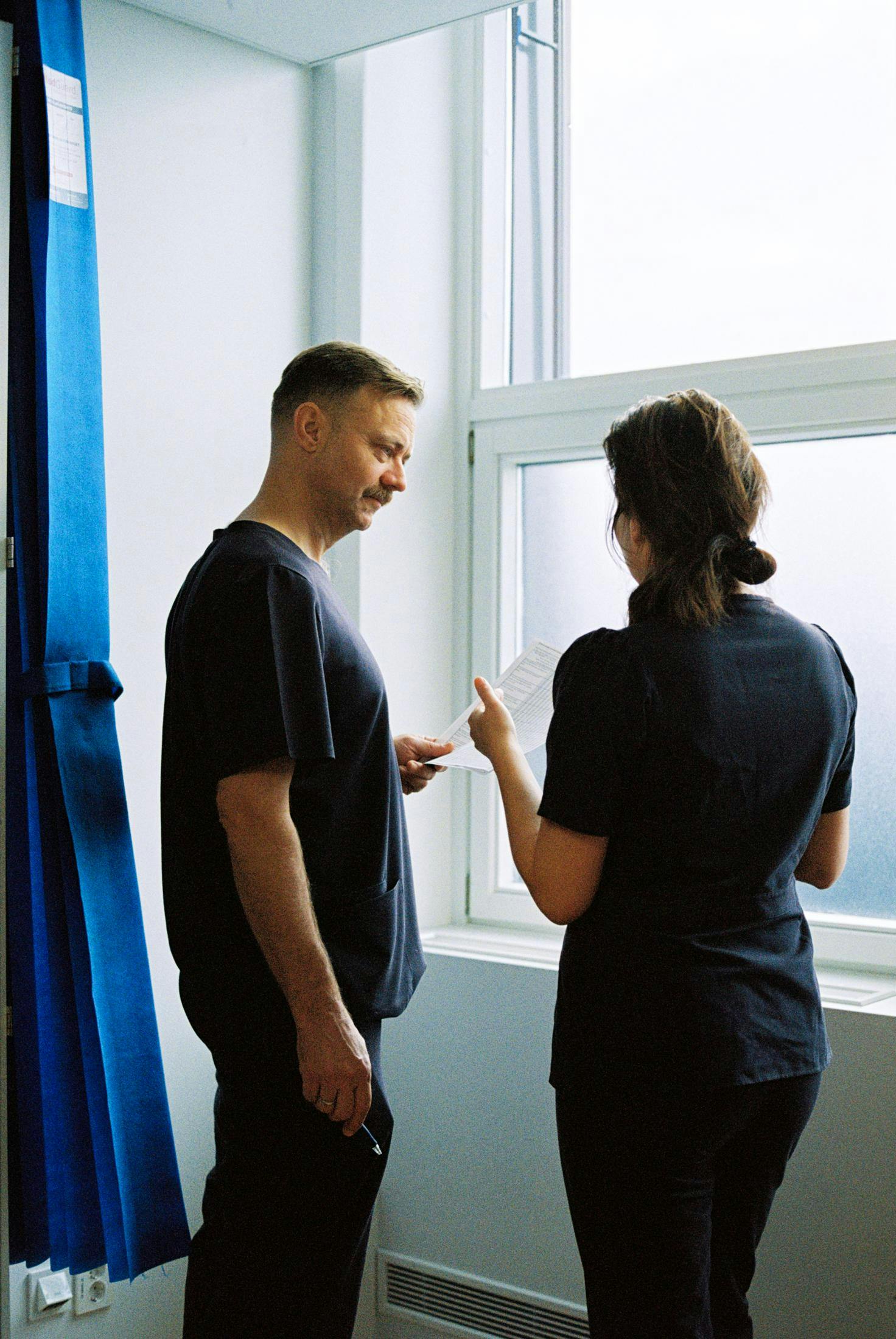
Short waiting time
In the best of hands
Bladder and urinary tract
400+ robot operations per year
Symptoms from the bladder and urinary difficulties are common. In most cases, it is completely harmless but can vary in the degree of discomfort. We specialize in diagnosing and treating various conditions within this area.
Blood in the Urine
Visible blood in the urine always needs to be investigated with an inspection of the bladder through cystoscopy and CT scans of the kidneys and ureters. This is primarily done to examine if there is any tumor in the urinary tract.
Difficulty urinating
Difficulty urinating is common and occurs in both women and men. There can be several causes. We conduct an individualized assessment of your symptoms.
As part of the investigation, symptom questionnaires and urine measurement logs are often included, as well as ultrasound of the prostate, cystoscopy, and uroflowmetry. Sometimes, a procedure called cystometry may be necessary.
If serious causes such as cancer have been ruled out, there are different levels of treatment:
- Expectant management involves waiting with treatment if the symptoms are not too bothersome.
- Medications are available in various forms and are tailored to your needs.
- Surgery: TURP, Rezum, Robot-assisted adenomectomy.
Transurethral Resection of Bladder Cancer (TUR-B)
The operation involves inserting a thin instrument through the urethra to shave off changes in the wall of the bladder.
The procedure is performed under general or spinal anesthesia and typically takes up to an hour.
Complications afterward?
There may be a burning sensation in the urethra after the catheter is removed, and urine leakage may occur. It might be challenging to reach the toilet when you feel the urge to urinate. The discomfort of urgency and burning gradually decreases and usually disappears after a week.
Even if the urine is clear immediately after the operation, it may become slightly blood-tinged intermittently during the first few weeks after the procedure. It is important to drink plenty of fluids, around two liters per day, until the urine clears again.
Sometimes, spontaneous bleeding occurs about two weeks after the operation when the scab comes off. If there is significant bleeding with clot formation that can cause urinary blockage, you should seek emergency care locally. If you experience high fever, chills, or increased urgency, it could be a sign of a urinary tract infection, and you should contact healthcare.
During the first two to three weeks after the operation, it is advisable to avoid heavy physical exertion such as running, cycling, heavy lifting, or sexual intercourse, as it may cause bleeding from the wound inside the bladder.
Benign Prostatic Enlargement
Benign Prostatic Hyperplasia (BPH) Treatment - TUR-P
TUR-P is a common treatment for severe urinary problems caused by the benign enlargement of the prostate gland (BPH) or obstruction in the neck of the bladder. Sometimes, the procedure may be part of the treatment for prostate cancer, for example, before radiation therapy.
Prostate resection, often referred to as "scraping," involves shaving the inside of the prostate, which is part of the urethra, to facilitate bladder emptying. The operator uses a camera instrument with a metal wire at the front. Through the arc-shaped metal wire, an electric current is passed, generating heat, acting as a cutting knife. As the prostate tissue is removed, the constriction in the urethra decreases.
If there is only a narrow bladder neck, it is usually sufficient to make an incision in the bladder neck (Transurethral Incision of the Prostate - TUI-P).
You are under general anesthesia throughout the procedure, which takes between 15 to 90 minutes depending on the size of your prostate. Due to the numerous blood vessels in the prostate, the operator carefully stops bleeding towards the end. As an additional safety measure, a urinary catheter is inserted before waking up after the operation.
The prostate tissue removed may be sent for microscopic examination (Pathology). Before the operation, you have already been evaluated to rule out prostate cancer, but sometimes there are specific circumstances where the operator decides to examine the tissue anyway. However, it is very rare for microscopy to reveal anything other than benign prostate tissue.
Rezum
The procedure is performed through the urethra under local anesthesia for the prostate and urethra. The instrument is inserted into the urethra, and steam is injected into the prostate tissue via a small needle inserted into the prostate. Depending on the size of the prostate, 4-8 insertions may be required.
You rest for a while but can go home the same day. After treatment, you will have a catheter in place for 4-10 days before an attempt is made to remove it.
Cystoscopy
Cystoscopy involves inspecting the urethra and bladder using a thin, usually flexible instrument. Before the examination, you receive a local anesthetic gel in the urethra to reduce discomfort.
The examination typically takes a few minutes, and your doctor provides immediate feedback on the results. Cystoscopy is performed, among other reasons, to investigate urinary problems or to assess blood in the urine.
In some cases, you may be prescribed an antibiotic as a preventive measure against infection related to the examination.
Specialist clinics
At our clinics, you will find a diverse group of highly qualified and dedicated professionals. From compassionate surgeons, committed gynecologists, and devoted fertility specialists to experienced urologists, empathetic physiotherapists, and understanding sexologists. Our experts collaborate daily to provide patients with the best care possible. They bring not only their individual expertise but also an interdisciplinary perspective to create a comprehensive understanding of your situation. We are here to offer treatment that embraces all aspects of you.
Finance
We are a private healthcare provider. This means you pay for the services yourself or have the evaluation or treatment covered by health insurance.
Private care
Some of our clinics accept privately paying patients from Sweden, Norway and abroad. In collaboration with our partners, we have developed favorable financing options for those who wish to pay privately. Contact your clinic for more information.
Frequently Asked Questions
Ensuring a seamless patient experience is our priority. If you encounter any queries or uncertainties, our contact number is conveniently located at the bottom of the page. Your convenience and peace of mind are of utmost importance to us!
Referral
No referral required. We are a private health clinic and, therefore, do not have a reimbursement agreement with the public sector.
Waiting time
We offer no to very short waiting times, typically ensuring assistance within a week. The timeframe varies depending on your specific needs; for example, simple consultations can be scheduled more quickly compared to surgeries. Feel free to contact us, and we'll find a time that suits you!
About the company
CMedical was established in 2013 and is a Nordic private healthcare provider with clinics in Norway and Sweden. We conduct approximately 50,000 consultations per year, ensuring to leverage our expertise to understand the overall health picture of our patients.
Medical examination
We recommend everyone to start with a diagnosis or consultation. A typical diagnosis with us lasts approximately 30 minutes.
